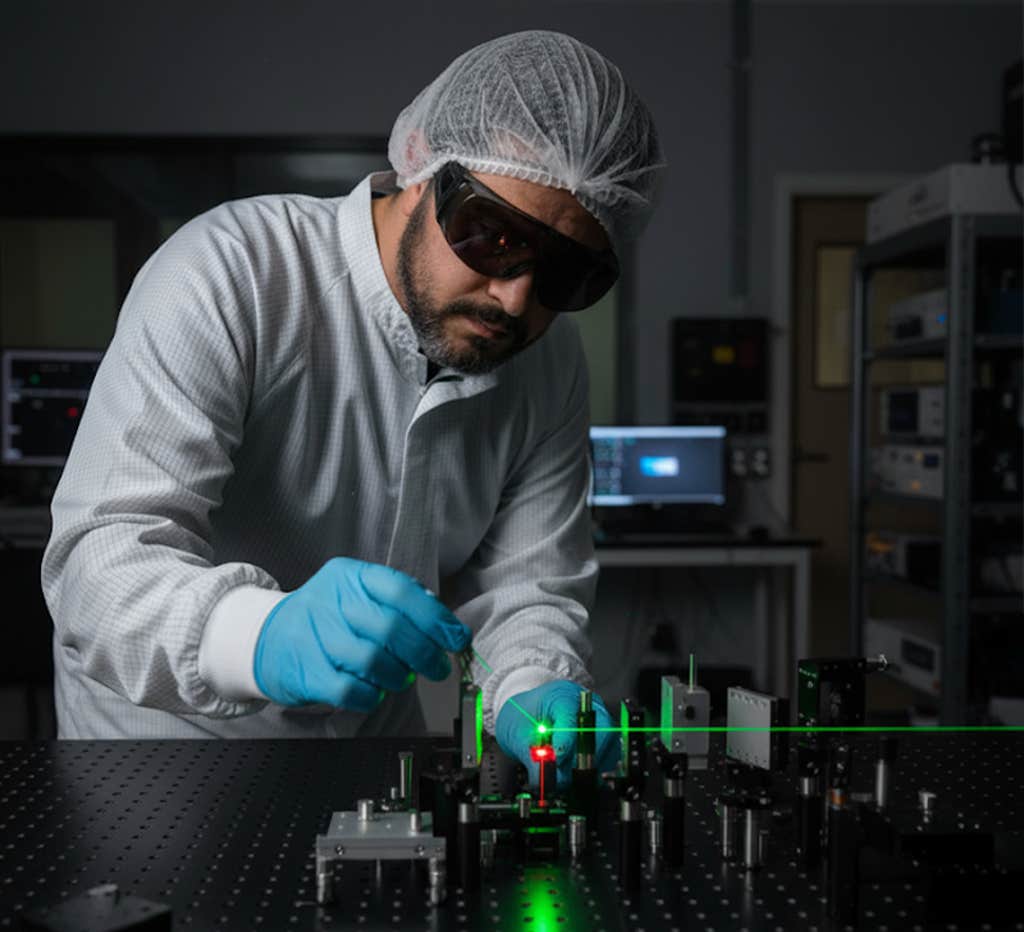The science of small is a big business. Microchips, medical devices, and lasers have been getting smaller and smaller for decades. But they’re still too bulky for a variety of advanced applications, such as brain-computer interface technology that can control nervous impulses using light or invisibility cloaks that can hide an object by changing colors or patterns to match surroundings. New nanotech designed by researchers in Australia could solve that problem, and their innovation was inspired by the iridescent blue of the morpho butterfly’s striking wings.
While a quantum optics graduate student at Australian National University, Mudassar Nauman stumbled upon a paper in which scientists tried to mimic the nanostructure that gives morpho butterfly wings their intense blue color. They got close, but couldn’t quite recreate the butterfly’s vibrancy in artificial wing scales. Nauman dug in and found that an unusual two-layered system is what makes the wings pop.
The first layer is a transparent nanostructure on the butterfly’s wings that amplifies the blue light reflected back at an observer’s eyes. The second layer is a dark melanin film underneath that first layer that absorbs stray light, sharpening the reflected blue. “Not all light reflects cleanly,” Nauman explains. “Stray colors and scattering would normally wash out the signal.”
Melanin sharpens butterfly blue by swallowing stray light.
He wondered if he could use the logic behind the morpho’s two-layer system in his own work with nonlinear optics, where intense light interacts with materials that transform some feature of the incoming light compared to the outgoing light. One goal of nonlinear optics is to change the frequency of light—e.g., turning incoming red into outgoing blue—a very attractive property called frequency doubling that can be useful in telecommunications devices, lasers, sensors, and bioimaging. In microscopy, for example, frequency doubling can generate images with sharper contrast than those generated by conventional microscopes. Frequency doubling is also helpful for generating short wavelength light, such as green lasers, which are more visible to the human eye and give off less heat than red lasers.
Usually, large cumbersome crystals are needed to facilitate this type of frequency change efficiently. But Nauman’s team tried to recreate the effect efficiently on the nanoscale using human-made materials called metasurfaces, ultrathin layers of patterned nanostructures smaller than a wavelength that affect light in a way few natural surfaces can.

Nauman wondered if he could use a two-layer system similar to the one employed by the morpho to improve how these metasurfaces amplify light. He suspected doing so could solve a “fundamental limitation in the field.” The metasurface he works with doesn’t normally function in the visible light spectrum, because the quantum particles it relies on for amplifying light, called excitons, absorb visible light wavelengths too strongly—in other words, they don’t reflect that light. This means Nauman’s metasurfaces can’t be used in applications, such as augmented reality or cloaking devices, in which altering human vision is a primary objective.
As a first step, the research team created a metasurface version of the nanostructures found on the butterfly’s wings. With some tweaks of the geometry of the metasurface, the scientists created a nanostructure that could bounce photons around in a way that they help excitons go from absorbing visible light to boosting its frequency and reflecting it.
The new technology could enable night-vision or augmented reality in contact lenses or glasses.
All of this must be done at precise frequencies in such a thin surface. “It is very complicated to design materials that align perfectly in frequency,” says Giuseppe Strangi, a nanophotonics and metasurfaces expert at Case Western Reserve University who wasn’t involved in Nauman’s study. “They succeeded in that.”
The metasurface designed by Nauman and his colleagues doesn’t work exactly like the butterfly’s wings, but it creates a similar effect. “Melanin sharpens butterfly blue by swallowing stray light. Our exciton sharpens orange-red by doing the opposite—it multiplies the very light it would normally absorb,” Nauman says.
As a bonus, the new tech operates at room temperature—making it more useful for real-world applications. Similar work with excitons has mostly been achieved in exceedingly low temperatures—typically below about -240 degrees Fahrenheit.
Nauman adds that his team sought to make the new technology even more broadly applicable by fine-tuning the metasurface in two separate ways. First, they can turn the system on and off by changing the polarization of the incoming light, or the direction of its electrical field, which can be easily controlled by a transparent plate called a waveplate. Second, they can change the intensity of the outgoing light using temperature like a dimmer switch. The further away from room temperature the air gets, the dimmer the outgoing light. “This provides an unprecedented control of light,” Strangi says.
All of this manipulation is done on a metasurface a fraction of the width of human hair. It’s so small that it could be incorporated onto any transparent surface. The potential applications for the new metasurface are nearly limitless, Nauman says. It could enable night-vision or augmented reality in contact lenses or glasses. On clothing, it could allow for adaptive camouflage. It could even be used in medicine to create devices that can communicate with neurons. Strangi adds that an exciting potential use in the world of physics is harnessing the metasurface to encode and convey quantum information, allowing for communication over quantum channels, a key feature of quantum computers.
These practical applications of the metasurface are not yet ready for primetime, though. It’s difficult and expensive to make metasurfaces from the necessary materials—tungsten disulfide crystals, which consist of geometrically arranged tungsten atoms sandwiched between two layers of similarly arranged sulphur atoms. And scaling up such a tiny technology to a usable device would require a huge amount of them, Strangi says. Luckily, other scientists are studying how to create the new surface more efficiently, Nauman adds, so these butterfly-inspired applications may take flight in the near future. ![]()
Lead image: Terii / Shutterstock
































